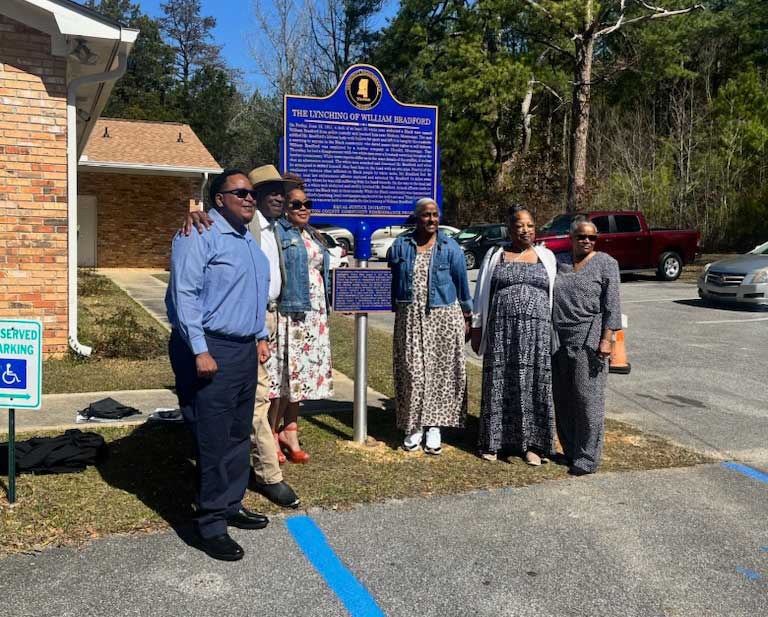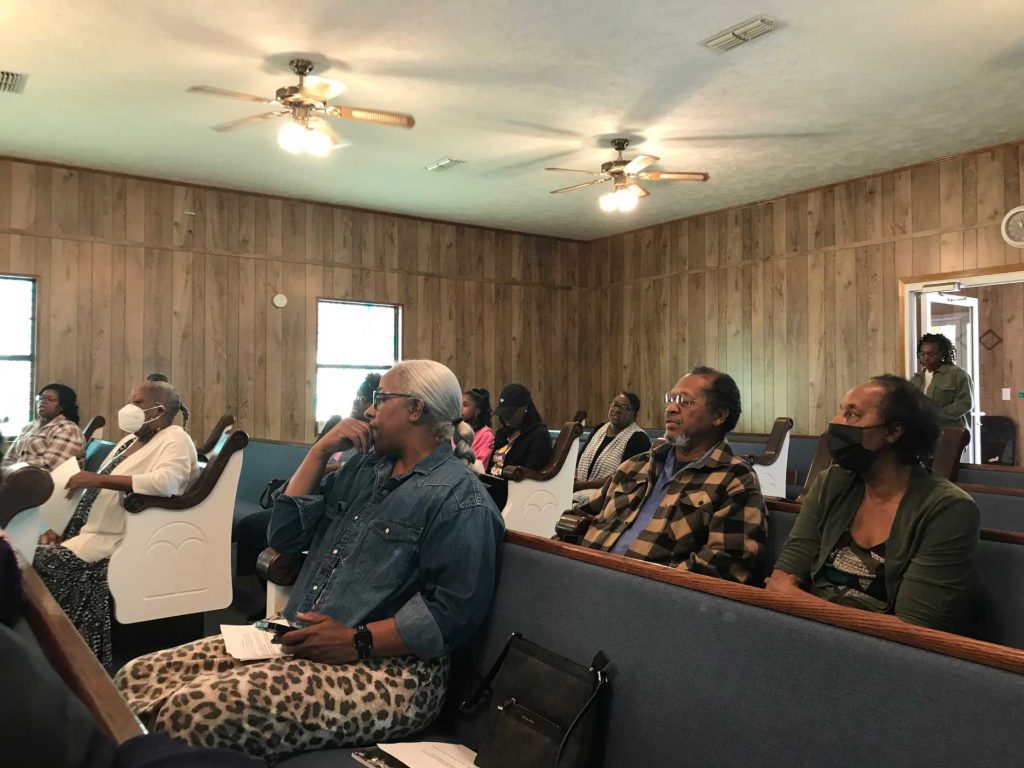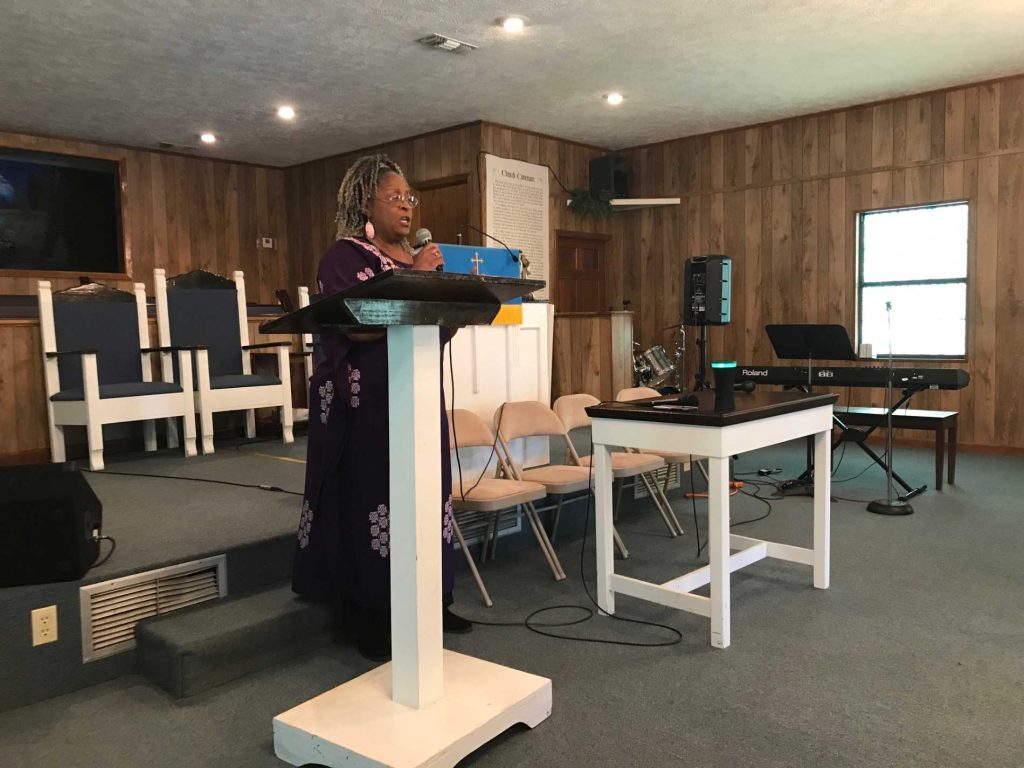On February 24, at the historic Bethel Missionary Baptist Church in Newton County, Mississippi, dozens of community members came together with EJI to dedicate a historical marker memorializing the racial terror lynching of William Bradford in 1911.
The Lynching of William Bradford
On June 16, 1911, a group of at least 50 white men kidnapped William Bradford and forced him to mount a horse. The mob then tied one end of a rope around Mr. Bradford’s neck and the other end to a tree. They whipped the horse to take off at high speed, and as Mr. Bradford was propelled into the air, the armed white men fired a barrage of bullets at him. The mob left Mr. Bradford’s body suspended from the tree until the town coroner removed his remains the following morning.
Mr. Bradford worked at Tallahatta Lumber Company in Chunky, Mississippi. Prior to the lynching, he got into a dispute with two white men over a water trough valued at less than $5. The white men accused Mr. Bradford of attempting to attack them, and he fled for his safety. Police pursued him to the home where he sought refuge for the night and arrested him in his sleep.
The white mob kidnapped Mr. Bradford from law enforcement custody to carry out the lynching. Newton County law enforcement claimed that they did not recognize any member of the lynch mob, and no white person was held accountable for Mr. Bradford’s death.
Many Black people were lynched under allegations of murder or assault. During this era, mere suggestions of Black violence against white people could provoke acts of racial terror before the judicial system could or would act.
William Bradford is one of at least 656 African American victims of racial terror lynching in Mississippi between 1877 and 1950, including at least six in Newton County.

/
Descendants of Dee Dawkins, who was lynched in Newton County, Mississippi, in 1908, attend the marker unveiling.

/
Community members gather for a dedication ceremony before the marker unveiling.

/
Effie Burt performs “Strange Fruit” during the dedication ceremony.
Community Remembrance Project
The Community Remembrance Project is part of EJI’s campaign to recognize the victims of lynching and advance honest conversation about the legacy of racial terror by collecting soil from lynching sites, erecting historical markers, and inviting community members to visit the Legacy Museum and National Memorial for Peace and Justice in Montgomery, Alabama, where the horrors of these racial injustices are acknowledged.
Through the Community Remembrance Project, EJI has joined with dozens of communities to install historical markers where lynchings have been documented in an effort to help towns, cities, and counties confront and recover from tragic histories of racial violence and terrorism.
We believe that understanding the era of racial terror is critical if we are to confront its legacies in the challenges that we currently face, from mass incarceration, excessive punishment, and police violence to the presumption of guilt and dangerousness that continues to burden people of color today.
The Newton County Community Remembrance Project was founded by activist and historian Joyce Salter-Johnson, who reached out to EJI after her grandchildren found the name of their ancestor, Frank Johnson, during a visit to the National Memorial for Peace and Justice in Montgomery.
In August 2019, she worked with retired judge Constance Slaughter-Harvey, Dr. Darrell Fielder, Alice Dawkins, and others to organize the coalition’s first community soil collection ceremony. The coalition sponsored two more community soil collections and dedicated a historical marker in 2021 honoring William Fielder, Dee Dawkins, and Frank Johnson, who were lynched in 1908.
Last month’s marker dedication ceremony opened with a prayer and closed with a moving rendition of “Strange Fruit,” the anti-lynching protest song famously recorded by Billie Holiday in 1939.
Friends and family members also spoke in tribute to the Rev. “Claud” Merl Dawkins, a descendant of Dee Dawkins whose enduring commitment to the Newton County Community Remembrance Project was recognized with a plaque that also was unveiled at the ceremony.